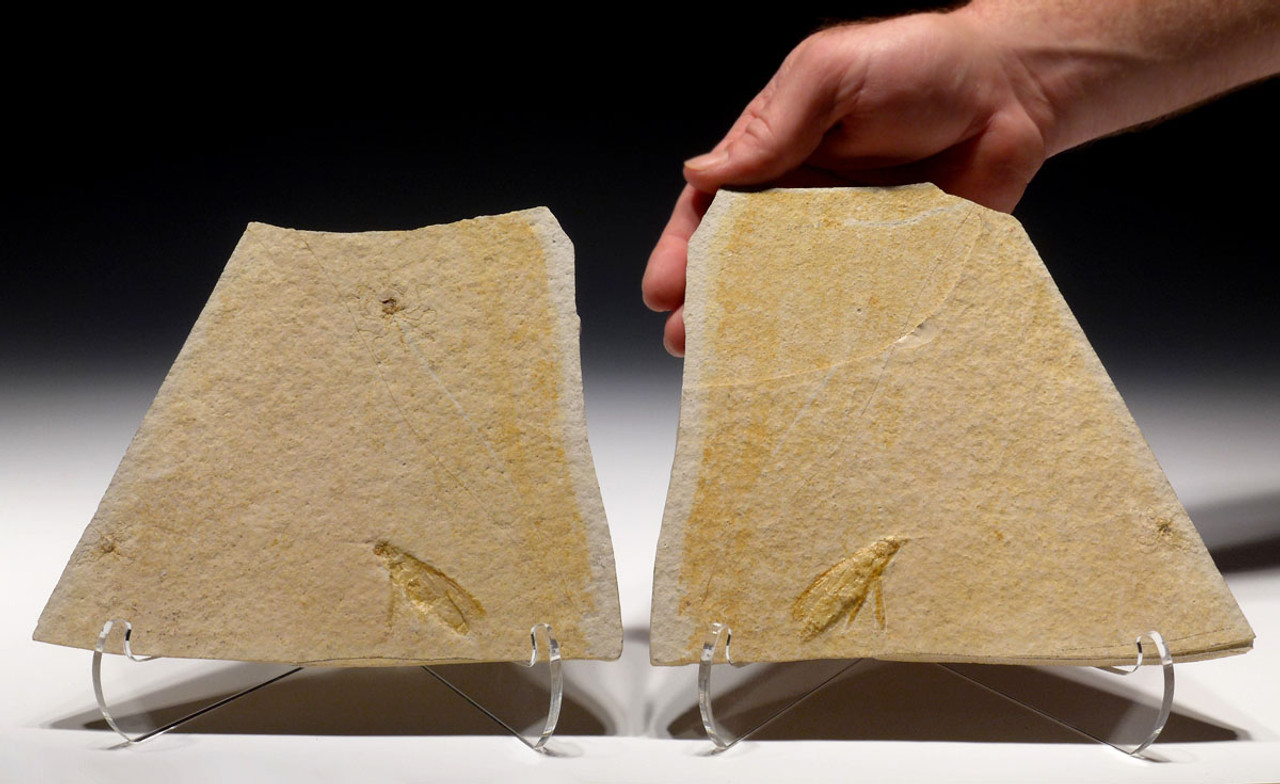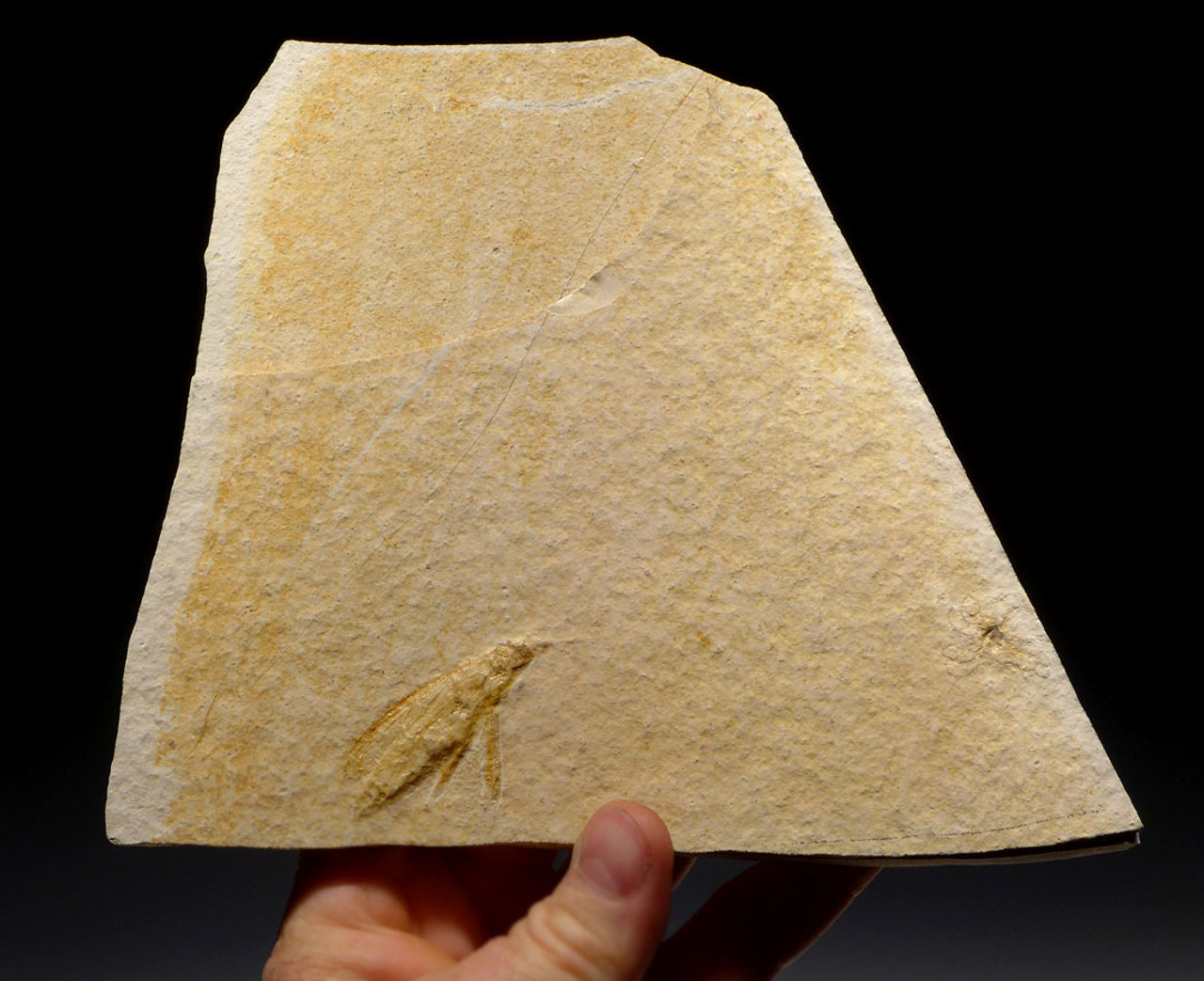Product Description
ITEM #
|
BU015
|
||
ID
|
Pseudosirex elegans
|
||
FOUND
|
Solnhofen Plattenkalk - Eichstatt, Germany
|
||
AGE
|
UPPER JURASSIC (MALM): 154 - 144 million years
|
||
SIZE
|
7.75" x 6.5" overall of plate, 1.85" long
|
||
CONDITION
|
NO REPAIR OR RESTORATION 100% AUTHENTIC
|
||
NOTE
|
EXCELLENT EXAMPLE OF A RARE INSECT WITH
|
||
INCLUDES STANDS - Actual Item - One Only
|
|||
This is an SUPREME GRADE fossil of an extinct WOOD WASP of the species Pseudosirex elegans. These are rarely seen insect fossils from Solnhofen and this side view perspective is more uncommon than the typical dorsal view fossils. Both plates are included which show detailed body, head and wing detail. There is much more high relief on on this Solnhofen beetle fossil than most you will encounter. Unlike many Solnhofen insect fossils that are nothing more than a crude body impression with all legs and wings missing and therefore, painted on the rock artificially, you can clearly see very rare detail in the rock with obvious high relief impressions of this insect. There is no artificial recreating of body parts that were not originally there on this fossil. Only the actual impression and fossil has been highlighted. Many Solnhofen insect fossils are fabricated by painting an "insect" on nothing more than an anomaly in the stone slab. This is a fantastic specimen and exceeds the relief and completeness of most examples found or offered for sale.
Recent scientific work has revealed that true beetles first show up in the fossil record in the Permian Period, nearly 300 million years ago. The insect order Coleoptera includes all types of beetles which have a rather uniform anatomy. Their bodies are divided up into three main sections and the entire body is covered in a hard exoskeleton. The wings are covered with hard forewings that open up prior to the beetle taking off in flight. Some beetles do not have the ability to fly. All beetles have mandibles for feeding mouthparts, compound eyes and six pairs of legs. Today, beetles are the order of insects that comprise the largest number of species. Estimates put the number of known and yet to be described tally of species somewhere between 5 and 8 million!
Famous for producing an astonishing diversity of rare and most intricately preserved fossils found anywhere in the world, the Solnhofen Lithographic Limestone Formation of southern Germany is legendary. Fine quality Solnhofen fossils are now much more rare than in past years. Many superb specimens come from old private collections as modern machinery destroys many fossils that were once easy to see and extract in the days of manual labor. Also, many quarries are now closed to commercial operations.
 US DOLLAR
US DOLLAR
 EURO
EURO
 AUSTRALIAN DOLLAR
AUSTRALIAN DOLLAR
 CANADIAN DOLLAR
CANADIAN DOLLAR
 POUND STERLING
POUND STERLING










